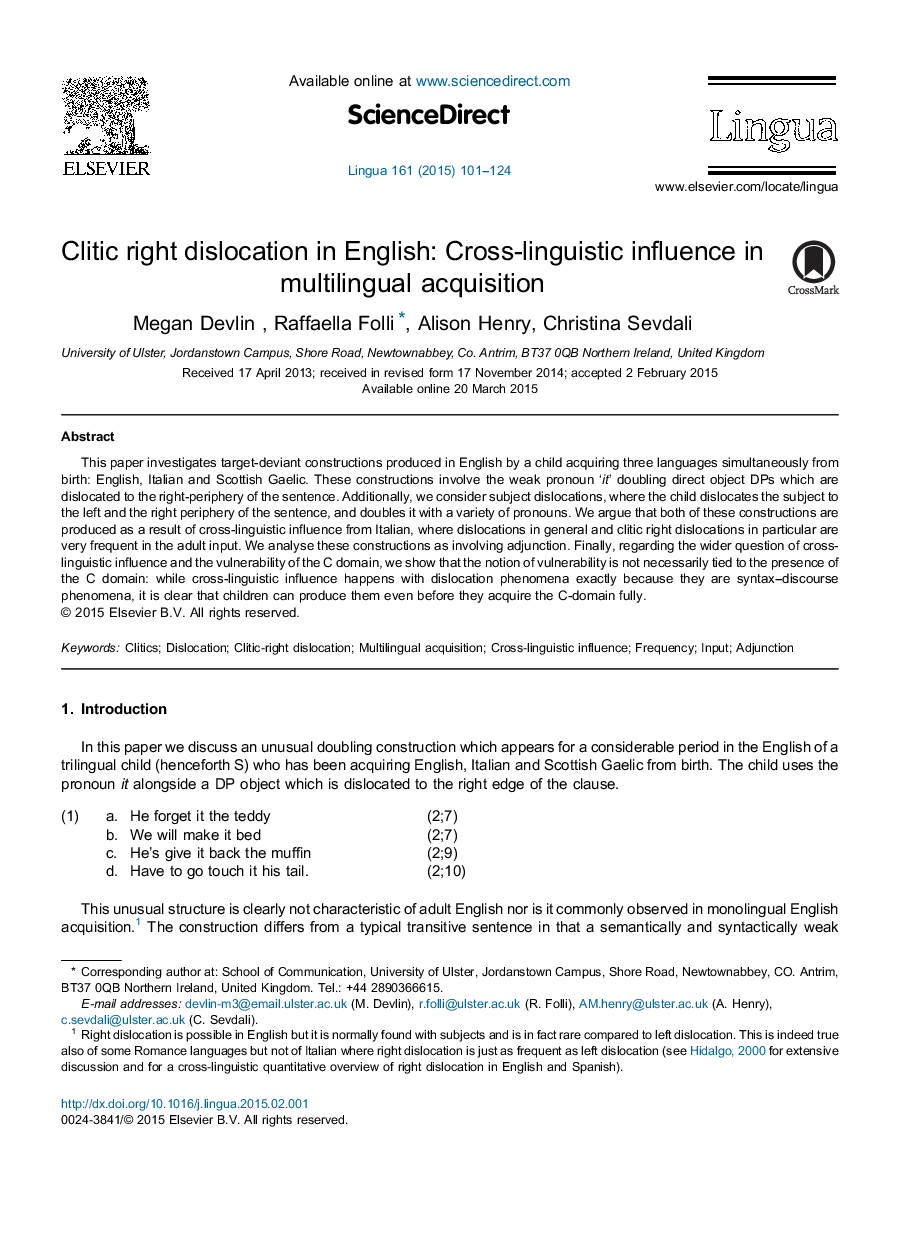| Article ID | Journal | Published Year | Pages | File Type |
|---|---|---|---|---|
| 935367 | Lingua | 2015 | 24 Pages |
•Cross-linguistic influence (CLI) as a feature of multilingual acquisition.•CLRD and subject dislocations are transferred into child's English from Italian.•CLRDs and subject dislocations involve adjunction in child and adult language.•It has a clitic-like behaviour in English.•CLI in constructions involving the syntax–discourse interface, a vulnerable domain.
This paper investigates target-deviant constructions produced in English by a child acquiring three languages simultaneously from birth: English, Italian and Scottish Gaelic. These constructions involve the weak pronoun ‘it’ doubling direct object DPs which are dislocated to the right-periphery of the sentence. Additionally, we consider subject dislocations, where the child dislocates the subject to the left and the right periphery of the sentence, and doubles it with a variety of pronouns. We argue that both of these constructions are produced as a result of cross-linguistic influence from Italian, where dislocations in general and clitic right dislocations in particular are very frequent in the adult input. We analyse these constructions as involving adjunction. Finally, regarding the wider question of cross-linguistic influence and the vulnerability of the C domain, we show that the notion of vulnerability is not necessarily tied to the presence of the C domain: while cross-linguistic influence happens with dislocation phenomena exactly because they are syntax–discourse phenomena, it is clear that children can produce them even before they acquire the C-domain fully.
